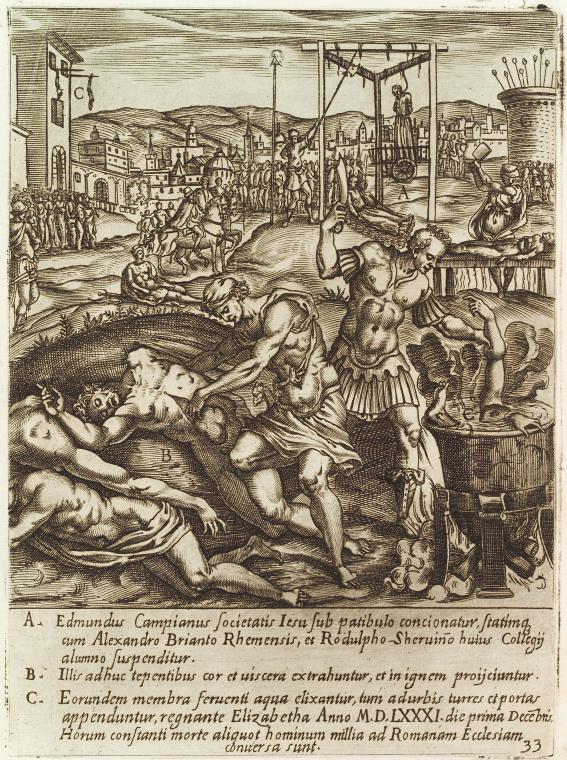
Elizabeth's Middle Way

Introduction
In 1571, Elizabeth published The Thirty-nine Articles of the Church of England (even today, priests have 39 buttons down the front of their cassocks).
Many historians have suggested that Elizabeth tried to follow a Middle Way in religion, which both Catholics and Protestants could accept:
After you have studied this webpage, answer the question sheet by clicking on the 'Time to Work' icon at the top of the page.
Links:
The following websites will help you research further:
Elizabeth I:
• Traditional account
![]()
![]()
1 How Elizabeth seemed to adopt a 'Middle Way'
| Roman Catholics | Elizabeth's Middle Way | Protestants |
|
The Pope is Head of the Church. |
The Queen is Supreme Governor of the Church in England. |
The local ruler should control the Church. |
|
The local Church should be ruled by bishops. |
There is nothing wrong with bishops, but they must be under the control of the Queen. |
The Church should be run by elders, elected by the people. |
|
The priest brings Christ to the people, in the service of the Mass. |
People must have their own faith, but only properly ordained priests can preach in church. |
A minister must preach to the people, to tell them what the Bible says. |
|
At the service of the Mass, the bread and wine turn into the body and blood of Jesus (transubstantiation). |
The bread and wine do not change – they stay as bread and wine ... but Christ is 'really present' in the bread and wine, in a spiritual way. |
The Communion service is just a service to remember Jesus' death. The bread wine stay as bread and wine. |
|
There should be statues of the saints and the Virgin Mary in church. Saints and the Virgin Mary can take a person's prayers to God. |
A person should not pray to saints. There should be no statues in churches. But the Church can celebrate saints' days. |
Statues of the saints and the Virgin Mary are as bad as idols. Only Jesus can take a person's prayers to God. |
|
Services and the Bible should be in Latin. |
Services and the Bible should be in English. |
Services and the Bible should be in English, so people can understand them. |
|
A person is saved by going to church and doing good works. |
A person is saved by faith, but a person with faith will do good works, because it pleases God. |
A person is saved by one thing only – a personal faith in Jesus Christ. |
|
Priests should wear bright robes, and churches should have colourful paintings and beautiful music, to show how great God is. |
Churches must be kept clean and in good repair. They can be decorated. There can be music. Priests should wear special robes. |
Ministers' clothes and churches should be plain, so people can concentrate on God. There should not be any music in the services. |
|
Priests must not marry. |
Priests can marry (but Elizabeth did not really approve of married priests). |
Ministers can marry. |
Elizabeth's Problems
Elizabeth may have wanted a Middle Way in religion, but people who did not follow it were punished.
Some extreme Protestants (called Puritans) wanted to get rid of bishops and special robes for priests. Elizabeth put them in prison. At the same time, Catholics who did not go to church (recusants) were fined.
Catholics were Elizabeth's biggest problem. Her enemies tried to get them to rebel against her. Elizabeth could never be sure that the English Catholics were loyal. Many Catholics plotted against the queen. Those who were caught were tortured and executed. So were the 130 Catholic priests who were captured during her reign.
When Edmund Campion was arrested for treason in 1581, he was starved and left to the rats. Iron spikes were pushed under his fingernails and toenails. He was hanged, then cut down while he was still alive and quartered. Through all this he was cheerful and never denied his Catholic faith. Was he a hero – or a traitor?
Catholic priests were hunted down by Elizabeth's soldiers. They tried to avoid capture by disguising themselves, and by hiding in priest holes in the large houses belonging to rich Catholics. When they were caught, they were tortured and executed. This picture shows the execution of Edmund Campion and two other Catholic priests in 1584.
